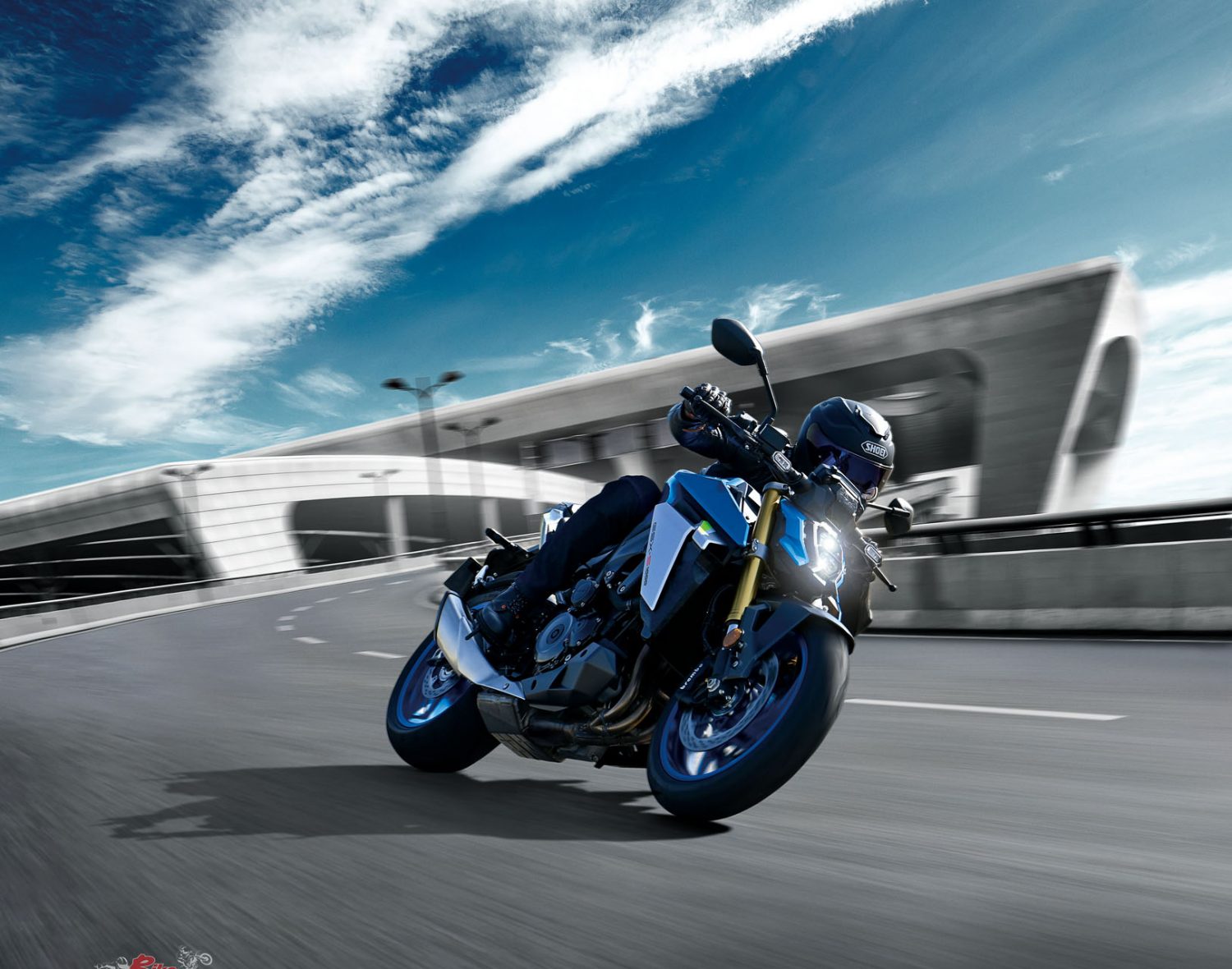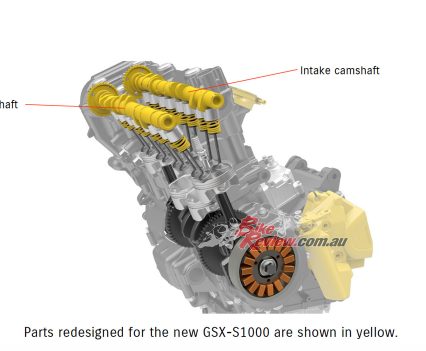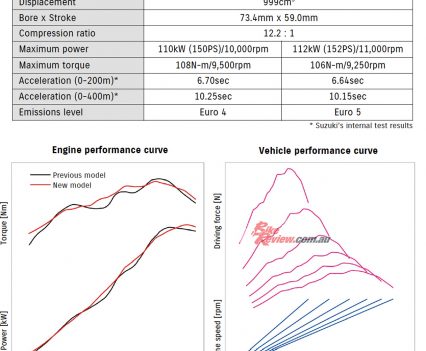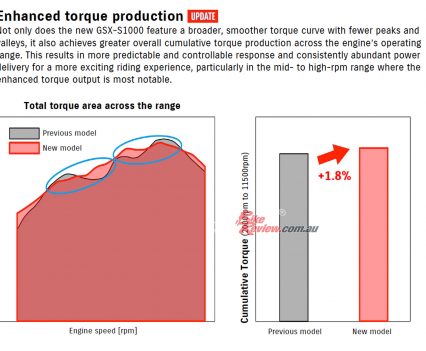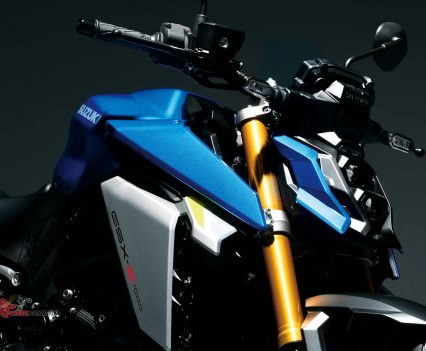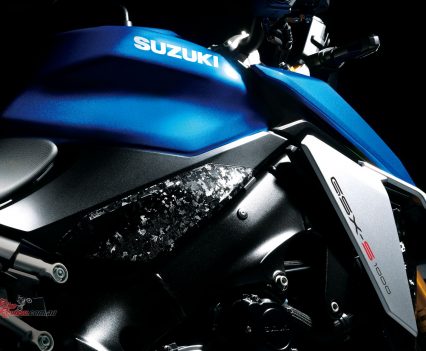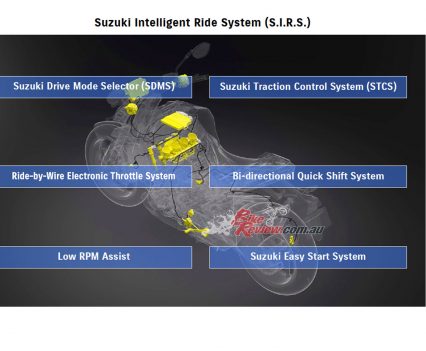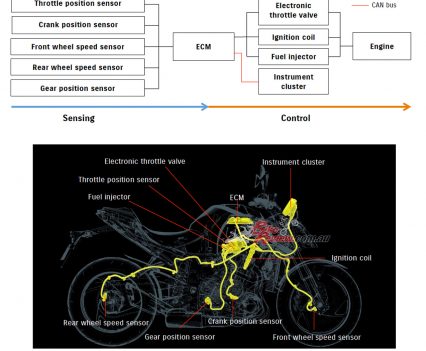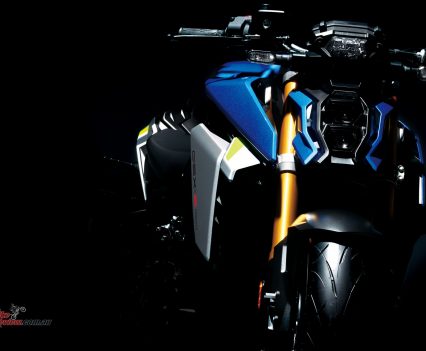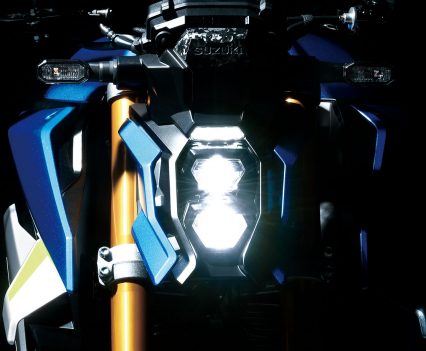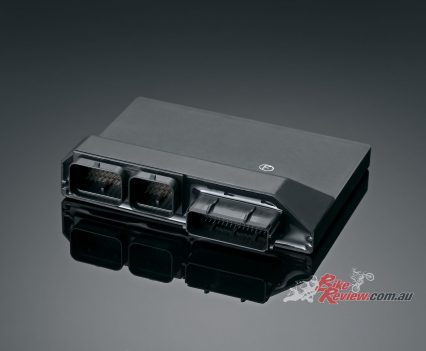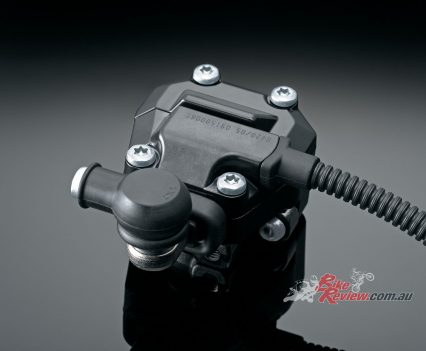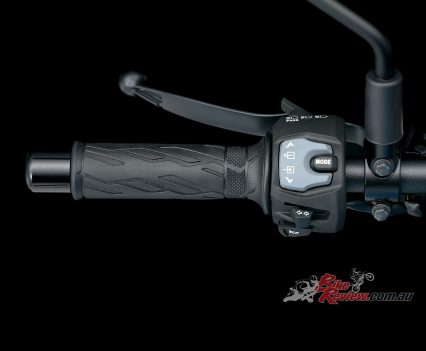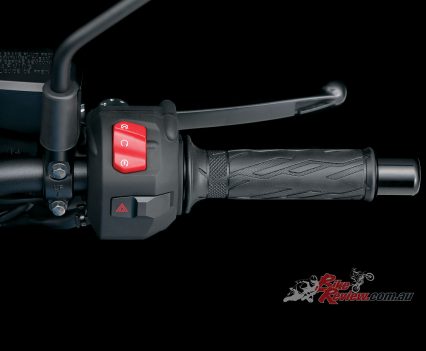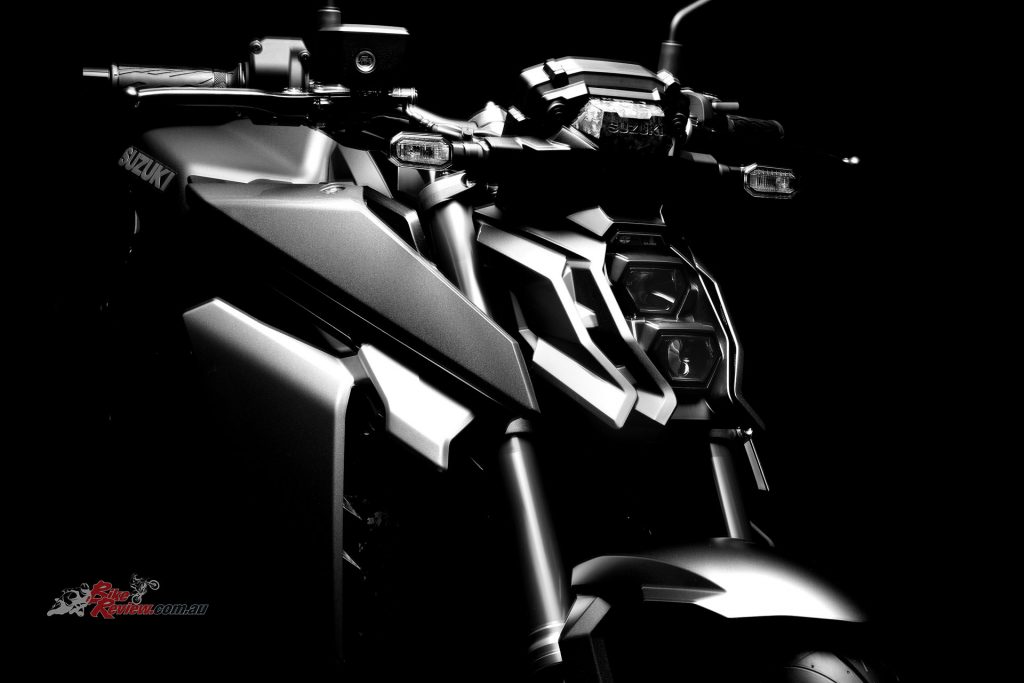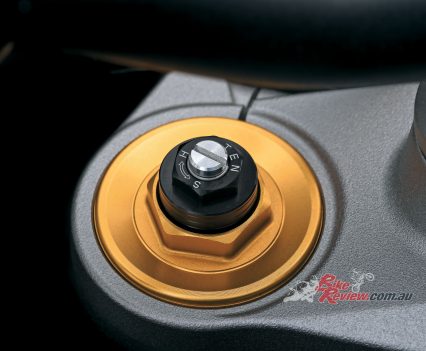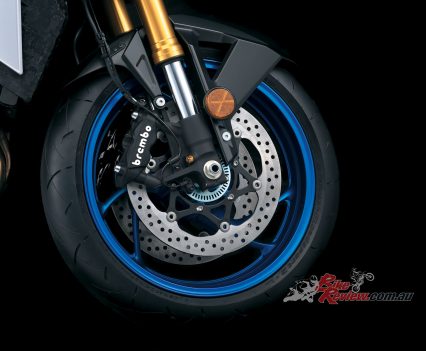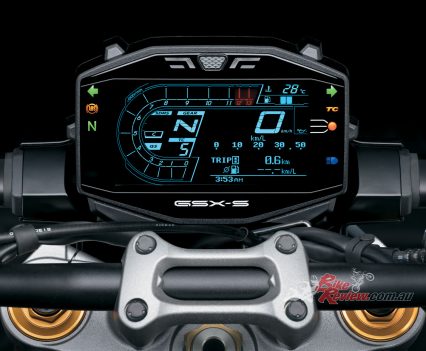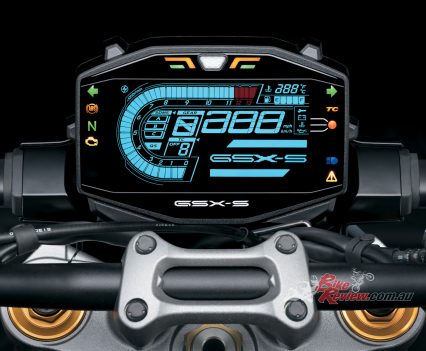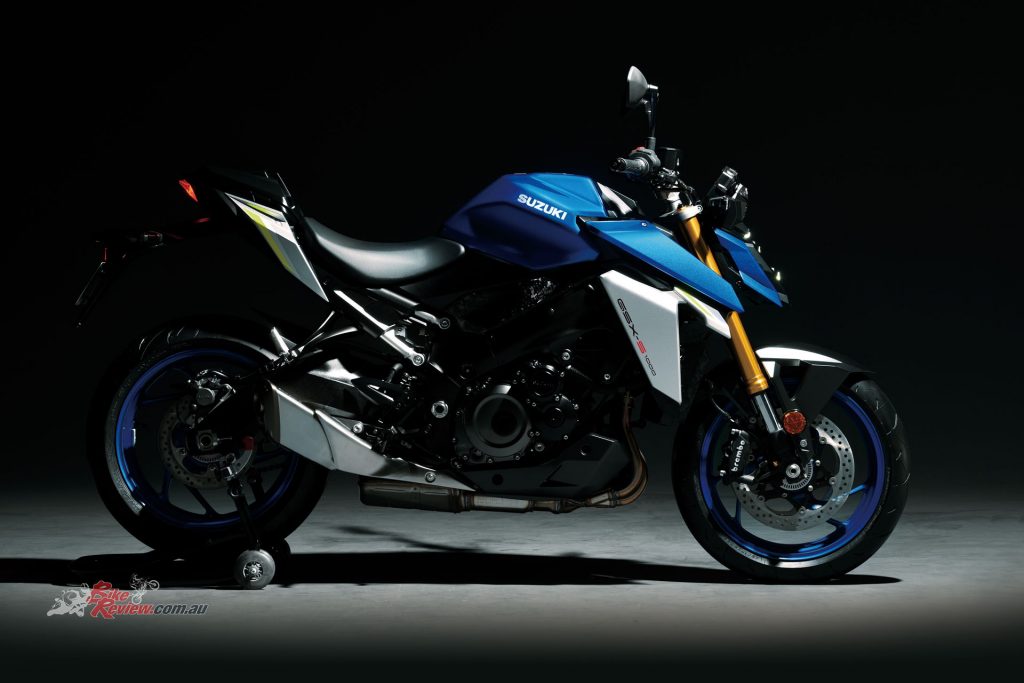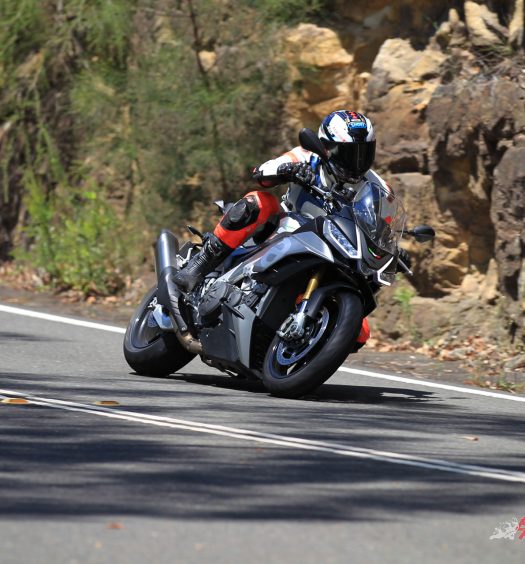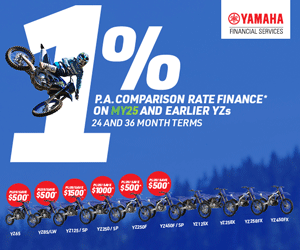Suzuki have finally released the first look at the long awaited updated GSX-S1000. The 2022 model features updated engine, chassis, styling, electronics and more...
The Suzuki GSX-S1000 launched in 2015 as a new model developed to bring riders the fun of sport riding on the street. At the heart was a street-tuned version of the powerful long-stroke 999cc engine that carried the GSX-R1000K5 to countless superbike race victories.
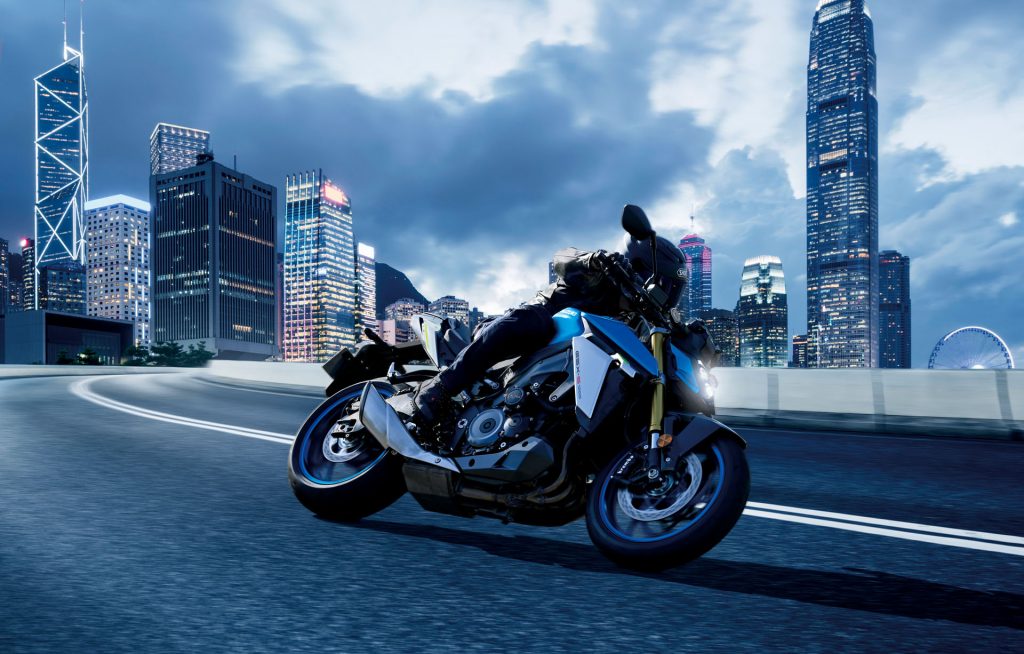
Suzuki have just released the first detailed look at the 2022 GXS-S1000 with an abundance of changes.
VIDEO: GSX-S1000 FEATURES & UPDATES
Suzuki say that six years on, the first major update to the GSX-S1000 now aims to enhance the overall balance of rider pleasing performance, to deliver greater controllability and agility and power for an even more exciting riding experience, to comply with Euro5 emissions standards, and to hone its physique into an even tighter and more striking package.
The high-performance 999cc four-stroke DOHC liquid-cooled inline-four engine that powers the GSX-S1000 inherits true winning superbike DNA. Suzuki say this street-tuned engine is based on core architecture that benefits from know-how acquired over decades of developing the GSX-R1000 to win countless production race victories, while also incorporating advanced technologies developed for MotoGP racing.
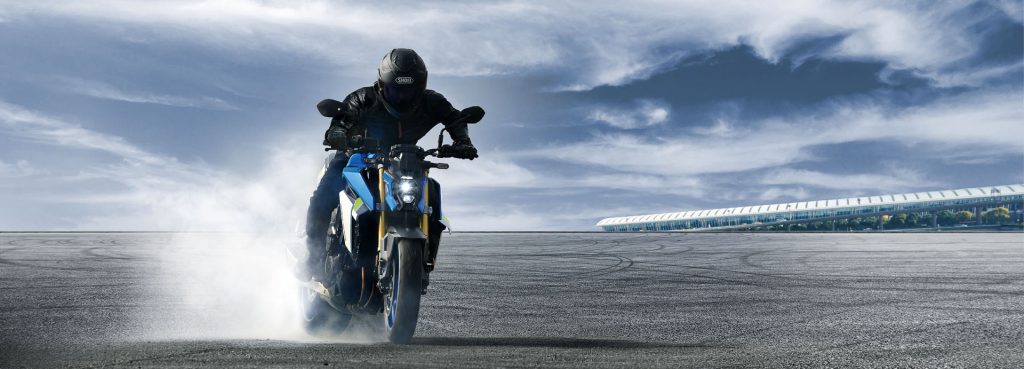
“Every aspect of its design underwent thorough review as it was updated to deliver ideal naked sport bike performance.”
Every aspect of its design underwent thorough review as it was updated to deliver ideal naked sport bike performance under varying riding conditions, whether out for a sporty run or negotiating traffic on city streets. Changes that include a new camshaft profile, new valve springs, a new clutch and new exhaust system increase power output and achieve an overall better balance of performance, all while satisfying Euro5 emissions standards.
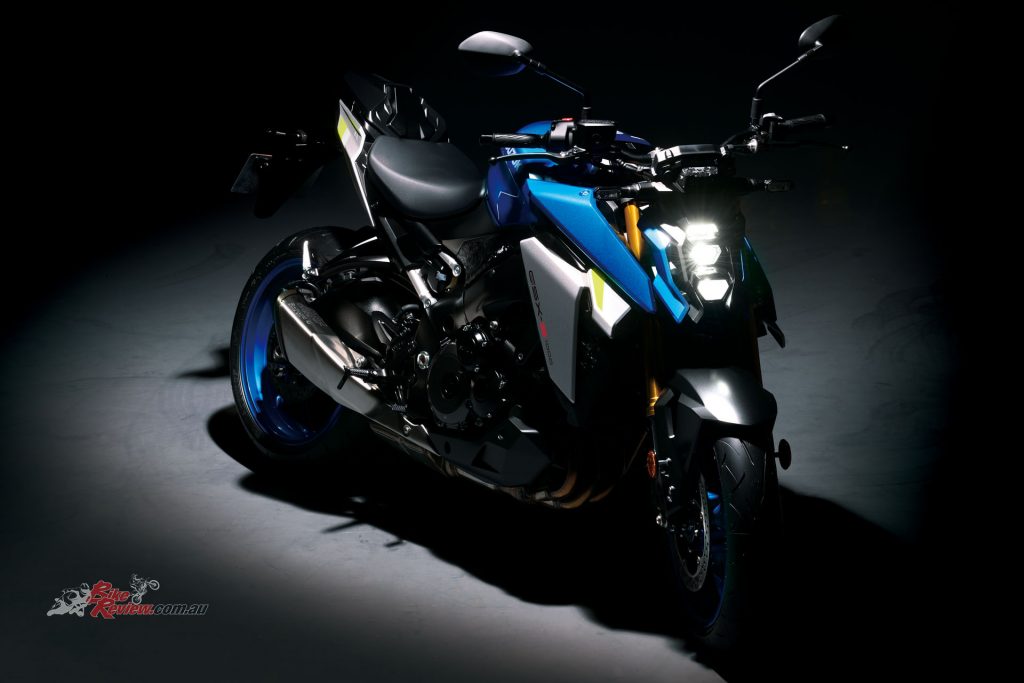
Suzuki have adapted plenty of their MotoGP technology to develop the updated model, bringing their best technology.
The new engine produces greater torque than its predecessor at low rpm. This brings a more satisfying feeling of better response and more immediate pick-up when accelerating from low speed. In the same vein, the engine demonstrates quicker torque response at mid-range and higher speed.
Check out all of our previous GSX-S1000 reviews & features!
In addition to its broad, smooth torque curve and power delivery throughout its wide powerband, the new engine incorporates a rich variety of new electronic control technologies that make the GSX-S1000 more controllable, more predictable, and less tiring to operate. This includes giving the rider fine control over power output characteristics, enabling them to match the way torque comes on when opening the throttle to the type of ride or their riding style at any given time. This in turn multiplies the pleasure of riding in different ways on even the same section of road.
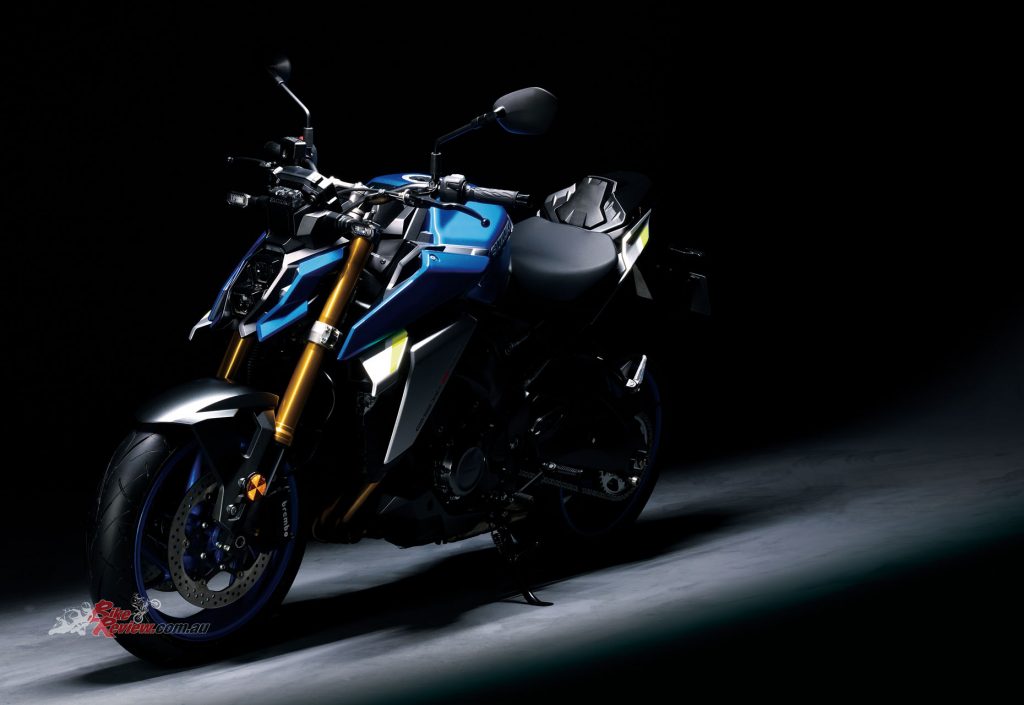
The updated model is a heavily updated bike from the first generation, even sporting a redeveloped engine.
While retaining the clean, sharp looks and exciting exhaust note of the previous model, the 4-2-1 exhaust system for the new GSX-S1000 was completely redesigned and tuned. Suzuki say their goal was to maximise overall performance while satisfying Euro5 emission standards. The new exhaust system not only retains the impressive resonance of its predecessor, the quality of its note is also enhanced to sound better.
A change to the bore size of the new electronic throttle-bodies helped achieve a better balance between control over idling speed and power output characteristics. One benefit of the new system is more controllable when the rider opens the throttle to accelerate out of a corner.
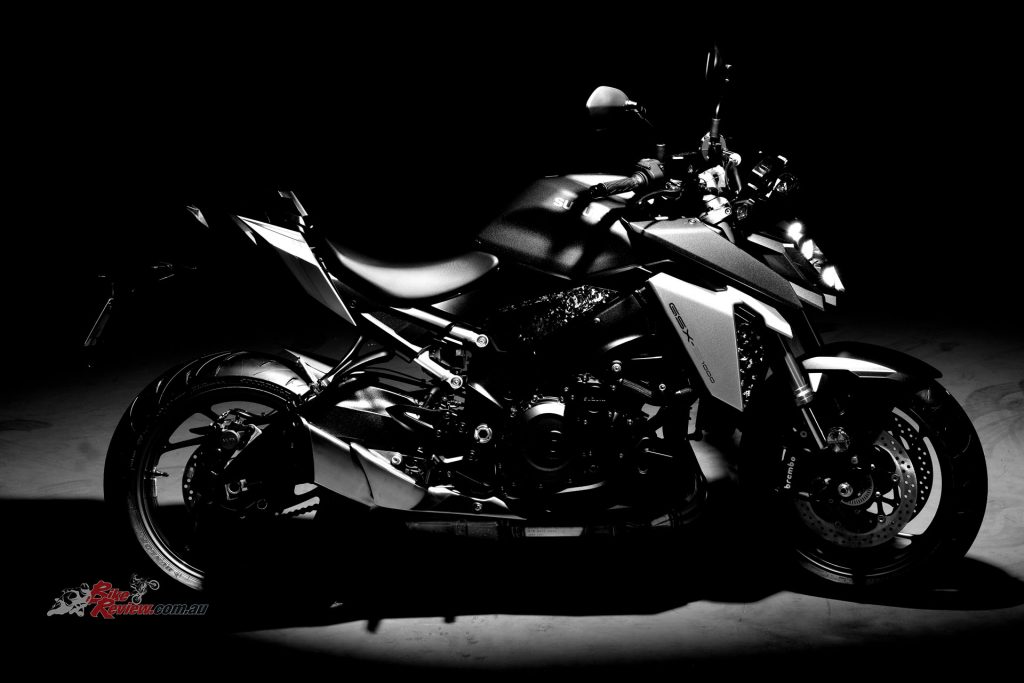
“It adopts a collection of the advanced electronic systems that comprise the Suzuki Intelligent Ride System (S.I.R.S.)”
The GSX-S1000 adopts the Suzuki Clutch Assist System (SCAS), which introduces an assist function to complement the slipper clutch from the previous generation. The slipper clutch partially disengages to reduce negative engine torque and mitigate the effect of engine braking when downshifting from high rpm. This helps prevent the rear tyre from locking up or hopping and provides smoother deceleration, enabling the rider to shift down with greater confidence and maintain better control when downshifting into corners.
The new GSX-S1000 has gained a collection of the advanced electronic systems that comprise of the Suzuki Intelligent Ride System (S.I.R.S.). Included are the Suzuki Drive Mode Selector (SDMS), Suzuki Traction Control, Ride-by-Wire Electronic Throttle, Bi-directional Quick Shift, Suzuki Easy Start, and Low RPM Assist systems. These enable the rider to optimise performance characteristics to best suit riding conditions and varying road surfaces, as well as their level of confidence and experience.
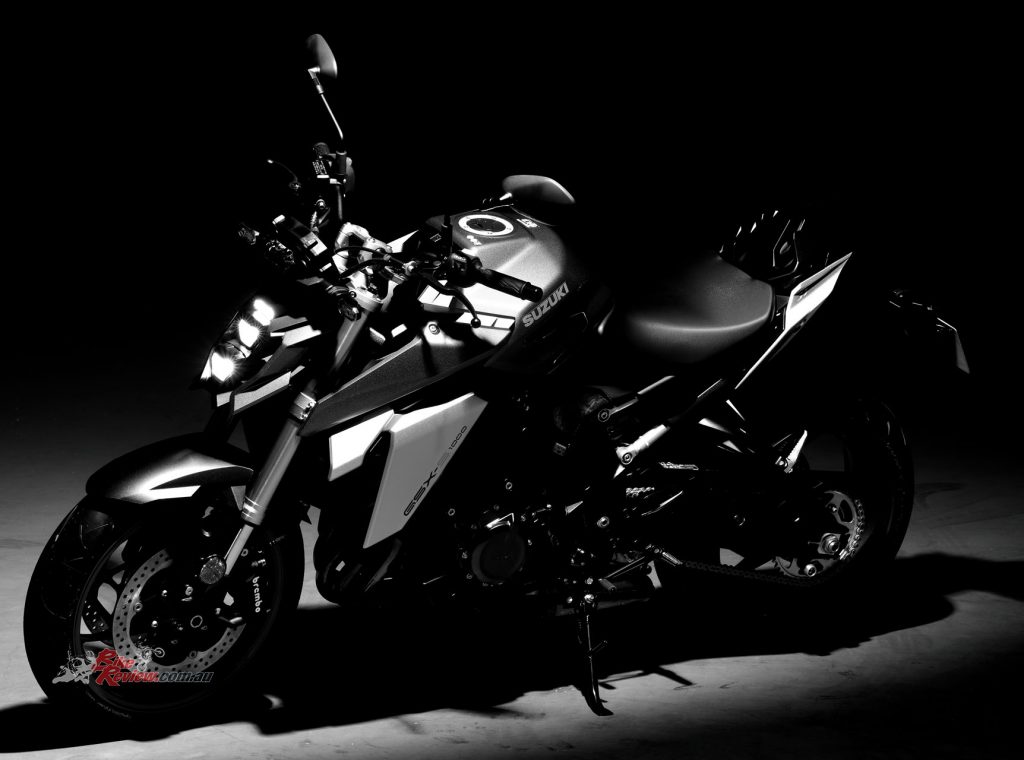
Riders will get a choice between a number of different riding modes to ensure safety and comfort on the road.
SDMS is designed to offer the rider a choice between three different modes that change output characteristics to match riding conditions or preferences. The settings for each of the three modes (Active, Basic and Comfort) were custom-tuned and thoroughly tested to maximise the GSX-S’s capabilities as a superior 1000cc-class naked sportsbike, while at the same time building in the flexibility to better adapt to changing weather, road and riding conditions and make the overall riding experience more enjoyable.
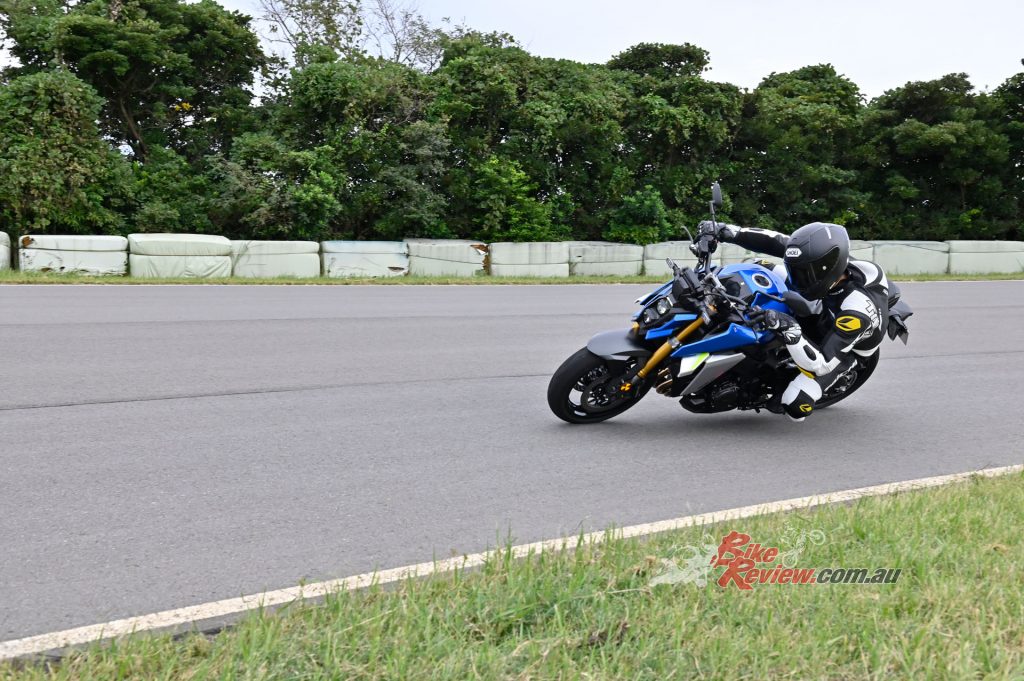
“It adopts a collection of the advanced electronic systems that comprise the Suzuki Intelligent Ride System (S.I.R.S.)”
The new GSX-S1000 features an updated version of STCS with a wider selection of 5 mode settings (+ OFF), as opposed to the 3 modes (+ OFF) of the previous generation. The finer incremental control over settings allows the new 5-mode traction control system to better fit a more diverse variety of riding conditions and styles.
This in turn instills greater confidence in the rider, regardless of experience, while reducing stress and fatigue. The higher number the mode, the faster the control takes effect and the more proactive the system is in limiting wheel spin. The system continuously monitors front and rear wheel speed, engine RPM (as calculated using data from the crank position sensor), throttle position and gear position.
The Bi-directional Quick Shift System enables the rider to shift up or down without operating the clutch lever. When activated by the rider, the system automatically interrupts power delivery when accelerating just long enough to unload the transmission gear dogs, thereby producing smoother, almost uninterrupted acceleration when the rider shifts up.
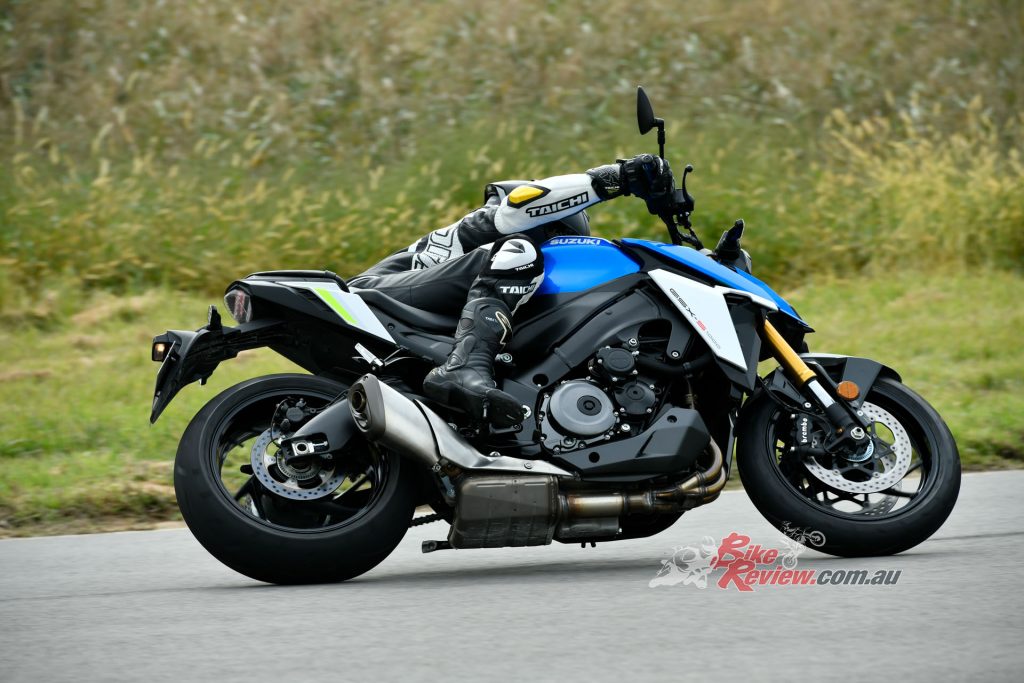
Plenty of track tests were run to ensure Suzuki were getting the most out of their new suspension and tyre set-up, along with their race inspired quick shifter set-up.
When decelerating, the system automatically opens the throttle valves just enough to increase rpm and match engine speed to the next-lower gear ratio. The result of this hands-free automatic blipping function combines seamlessly with engine braking to create a highly satisfying experience when the rider downshifts.
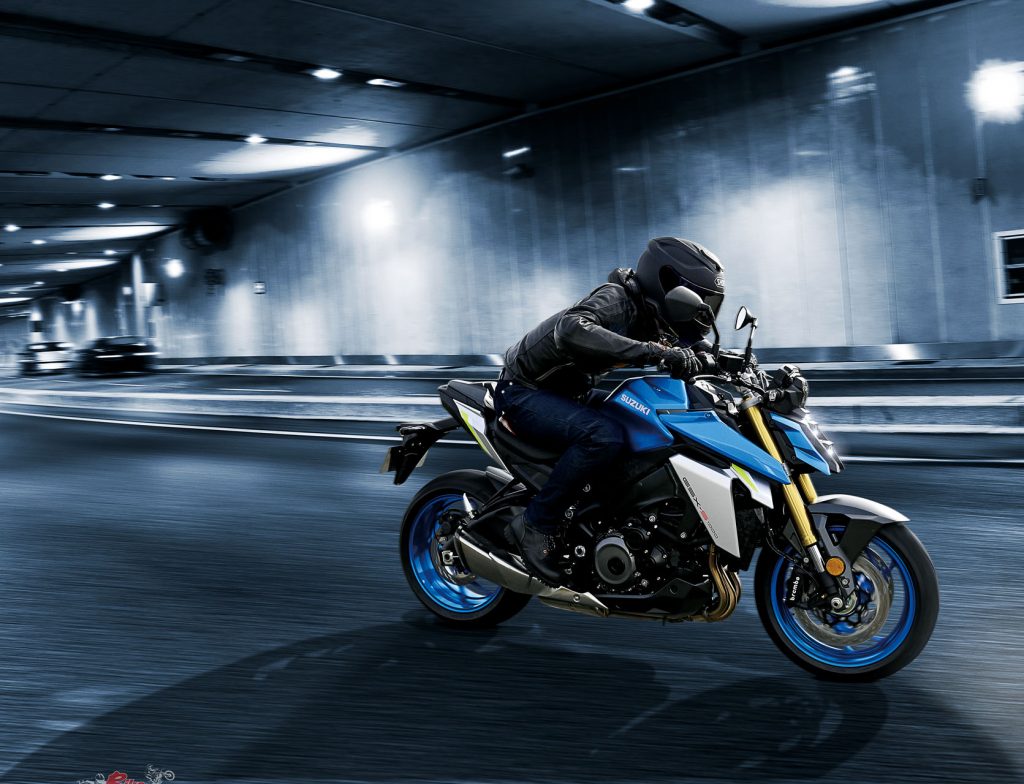
Suzuki have also adapted their new Easy Start System to make the bike more comfortable to ride in traffic.
The Suzuki Easy Start System lets the rider start the motorcycle with one quick press of the starter button. There is no need to pull in the clutch lever when the transmission is in neutral, and the starter motor automatically disengages the instant the engine fires up. As a function used every time the engine is started, removing the bother of the above operations makes the riding experience all the more pleasurable and convenient.
While the low RPM assist system employs TI-ISC (Throttle-body Integrated Idle Speed Control) to seamlessly boost engine speed when releasing the clutch lever to launch from a standing start or riding at low speeds, thereby suppressing engine stalls and helping ensure better control and operation in stop-and-go traffic. The system is updated for the new GSX-S1000 and works in harmony with the Suzuki Clutch Assist System (SCAS) to make pulling away form a standing start even smoother.
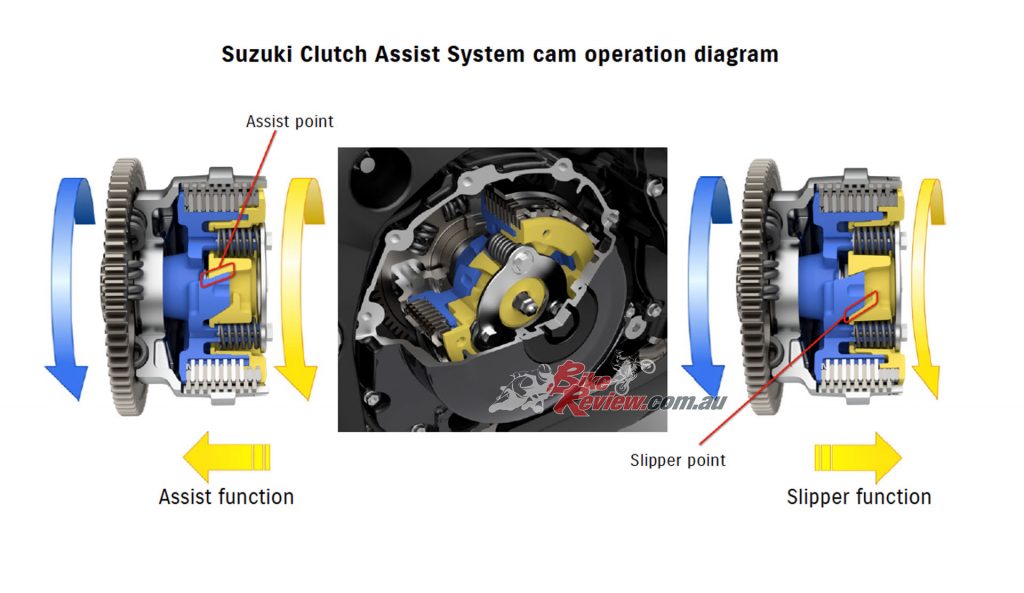
Slipper clutches are nothing new but Suzuki has put copious amounts of engineering into improving the design.
The twin-spar aluminium frame helps to ensure nimble handling and great road holding ability. The main tubes are straight from the steering head to the swingarm pivot, which is ideal for achieving high rigidity and light weight. The sturdy aluminium-alloy swingarm comes straight from the GSX-R1000. It is ruggedly braced and helps to ensure great road holding ability together with superbike looks.
New tapered handlebars of extended length realise a grip that is roughly 23mm wider than on the previous model, and the bars are rotated upward slightly to raise the grip position. Suzuki say they made they change after testing to best match the length and positioning to the output characteristics of the updated engine, this new design brings the grips 20mm closer to the rider and contributes to a more upright riding position. Moreover, the wider grip and closer positioning enables the rider to steer the front end with less effort. That in turn enhances controllability and reduces rider fatigue.
The 43mm KYB inverted front forks give a ride that is sporty yet plush. They have fully adjustable damping, rebound, compression and spring preload. The link-type rear suspension with adjustable rebound damping and spring preload settings contributes to enhancing agility and stability. Various settings were thoroughly tested in relation to changes made to the internal structure of the tyres before the optimum settings were applied to give nimbler handling and improved steering into corners.
Dunlop’s new Roadsport 2 radial tyres (120/70ZR17 at the front; 190/50ZR17 at the rear) are custom-engineered to perform optimally on the GSX-S1000 and contribute to further improving on the great grip and other performance characteristics of the D214 tyres they replace. The updated internal construction, which differs from the commercially available version, features a carcass and Ultra Flex Steel Jointless Belt layer tuned to deliver just the right level of rigidity to match the weight, performance characteristics and riding conditions under which the GSX-S1000 will be used.
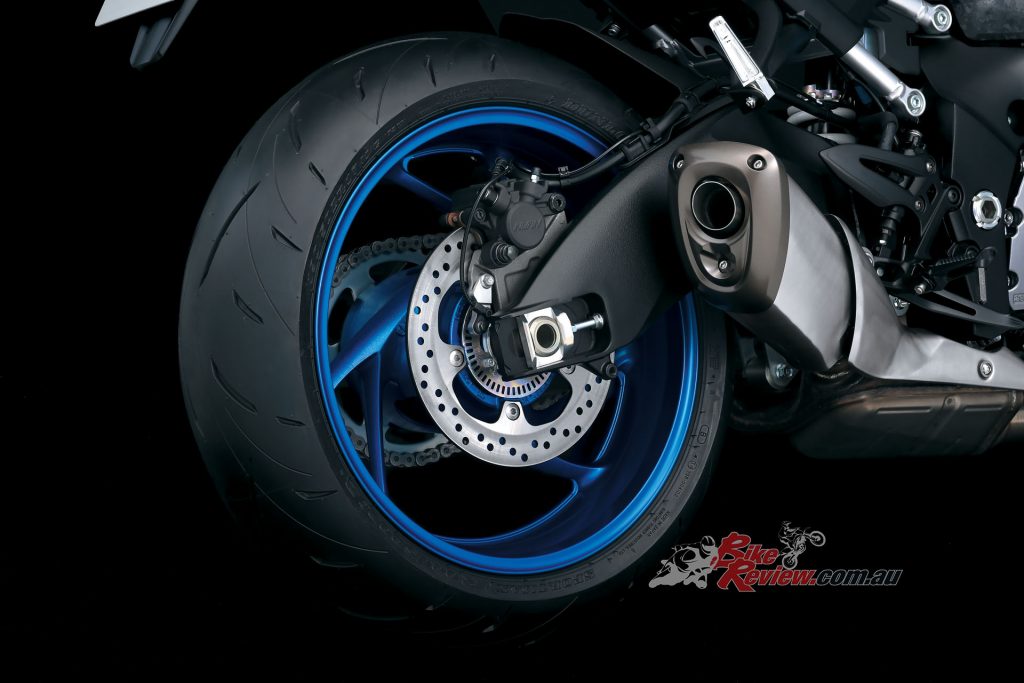
The traction comes from Dunlops new Roadsport 2 radial tyres, which are custom engineered for the GSX-S1000.
The full LCD brightness-adjustable instrument cluster packs a wide range of useful information into a relatively compact form factor (sadly no TFT). It is also designed to make the readouts from its multiple functions easy to recognise. LCD readouts include: Speedometer, tachometer, odometer, dual trip meter (A, B), gear position, water temperature, riding range, lap time mode, average fuel consumption, battery voltage, instant fuel consumption, RPM indicator, service reminder, SDMS mode and a fuel.
LED indicators flanking the display include those for the turn signals, high beam, neutral, malfunction, master warning, ABS, traction control system, low voltage warning, coolant temperature and oil pressure. They are designed for easy recognition.
Pricing will start from $17,290 ride away, the 2022 Suzuki GSX-S1000 will be available in Metallic Triton Blue, Glass Mat Mechanical Gray and Glass Sparkle Black. The updated model will be available from March 2022, you can place your pre-order through the Suzuki website now!
2022 Suzuki GSX-S1000 Specifications
Price: $17,290 ride away
Colours: Metallic Triton Blue, Glass Mat Mechanical Gray and Glass Sparkle Black
Claimed power: 112kW@11,000rpm
Claimed torque: 106Nm@9,250rpm
Curb weight: 214kg
Fuel capacity: 19L
Engine: four-stroke, four-cylinder, liquid-cooled, DOHC, 999cc
Bore x Stroke: 73.4 x 59mm
Compression Ratio: 12.2:1
Gearbox: Six speed Clutch: Wet multiplate
Chassis: Twin-spar aluminium
Rake: 25 degrees, Trail: 100mm
Suspension: Fully adjustable 43mm KYB USD forks, Adjustable link-type rear suspension
Brakes: four-piston Brembo mono-block front brake calipers 310mm floating-mount dual rotors, single rear rotor Tyres: 17in six spoke cast aluminium wheels, 120/70-17 – 190/50-17 tyres.
DIMENSIONS:
Wheelbase: 1460mm
Seat height: 810mm
Overall length: 2115mm
Height: 1080mm
Width: 810mm
Instruments & Electronics: Vertically stacked LED headlights in hexagonal housings topped by an LED position light LED front and rear turn signals, full-LCD instrument panel features a custom display.


